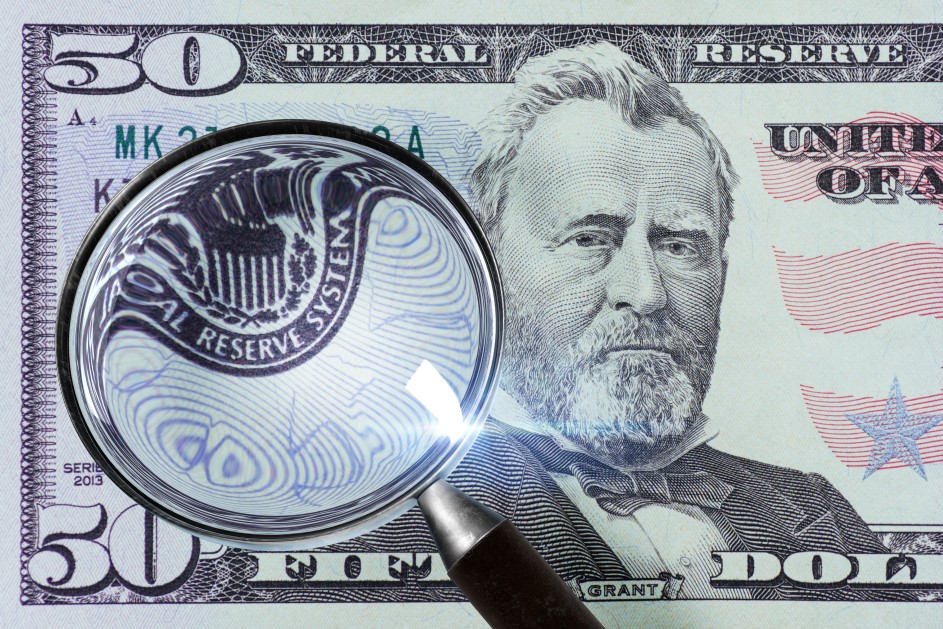The counterfeiting of currency is a common phenomenon. Around the same time as "money" became a standardized trade unit, it became criminal abuse. It has long been a high-profit-generating crime for people and criminal groups, too, from Sumerian coin shell money to metal coins and eventually the emergence of paper money. With the increased demand and popularity outside of local markets, counterfeiters had plenty of resources. It has developed into more extreme forms over time and has been and is now being used as a tool of economic warfare.
Although many real paper currencies have "feel-look-tilt" features that should make counterfeit paper money easy to spot, some counterfeits, particularly those printed using altered printing and advanced techniques to replicate some security features, have become extremely difficult to spot. The discovery of "high quality" counterfeit currency notes (CCN) in a number of jurisdictions around the world tends to point to the presence of foreign criminal organizations. It has been discovered that Organized Criminal Groups (OCGs) centered in one country are trafficking counterfeit money from other countries. To maximize their earnings, these criminal organizations utilize their already established networks, which include a secret network of smugglers and money laundering companies, to inject counterfeit currency into the financial system.

Money Laundering Schemes Involving Counterfeit Currency
Counterfeit money is a growing concern for law enforcement and regulatory agencies worldwide. Criminal organizations engaged in counterfeiting use fake banknotes to generate illicit profits, which they then attempt to launder to make them appear legitimate.
One common method of laundering counterfeit money is called "smurfing". Smurfing involves the use of small denominations of counterfeit bank notes to make multiple deposits into various bank accounts. The criminals use different accounts to avoid detection and suspicion, and once the funds are in the accounts, they can be used for legitimate or illegitimate purposes without raising suspicion.
Another way that counterfeit money is laundered is through currency exchanges. Criminals purchase foreign currency with their counterfeit money at currency exchanges, which they then use to buy legitimate assets or transfer funds internationally. The use of foreign currency helps to conceal the origin of the illicit funds and makes it harder for law enforcement to track them down.
Counterfeit money can also be laundered through the use of shell companies or offshore accounts. Criminals may engage in complex financial transactions involving multiple parties and jurisdictions, further complicating the trail of the illicit funds.
The prevalence of counterfeit money and its use in money laundering schemes is a significant threat to the financial system and communities worldwide. It is crucial for individuals and organizations to remain vigilant and report any suspicious activity to the authorities to combat this illegal activity. By working together, we can protect the integrity of the financial system and prevent criminal organizations from profiting from their illicit activities.
FAFT’s Report
Counterfeiting currency is designated as a predicate offense for money laundering in FATF Recommendation 3. Particularly, particular features of currency counterfeiting, such as counterfeit currency production, trafficking, and insertion into the financial system, and proceeds laundering, have still not been directly considered in descriptions research to understand further the similarities and differences between counterfeiting a subscript and related methods of laundering.
Terrorists and their sympathizers have been interested in counterfeiting because it is very profitable, especially as compared to other types of illegal activity such as drug trafficking. Counterfeiting has developed from a crime that generates funds that are then used to support terrorism to one that aims to replace real currency. In some instances, especially during times of conflict, the infiltration of high-quality counterfeit notes has been used to target a country's economy to erode public confidence in its currency.
Since currency counterfeiting has an international context, it is necessary to transfer proceeds across international boundaries. Furthermore, selling counterfeit notes succeeds in their incorporation into the mainstream financial system. The methods for introducing counterfeit notes into a financial system are very similar to those used for "placing" illicitly generated proceeds from other types of criminal activity. This means that a large-scale currency counterfeiting enterprise can only be considered effective if the illegal profits are not successfully laundered.
A study conducted by FAFT indicates that cash couriers are the most often used tool for moving criminal proceeds. The intermingling of cash-intensive businesses, movement through various jurisdictions, movement through multiple banks, and fraudulent or deceptive declaration of goods and services are the most often used methods for layering and integrating proceeds of crime, usually organized crime, relating to counterfeit currencies.
According to the report, special investigative tactics such as undercover/sting operations, intercepting emails, monitored distribution, tracking and retrieval of assets, and trust buys are used to counterfeiting investigations in many countries. However, owing to low budgets and stringent rules, the degree to which these methods are used by Law Enforcement Authority (LEAs) is often limited, blocking successful cross-border cooperation.
Policy Implications
The project has identified several policy implications for possible advancements in the fight against counterfeiting of currency:
- Enhancing international cooperation between all actors involved at various levels of accountability, such as regulators, LEAs, and judicial authorities, as well as other players in the region, such as financial intermediaries, is critical.
- Homeland security should be urged to extend the related questionnaire to cover more on ML/TF topics in order to provide a more complete overview of the subject matter.
- Effective reporting processes and the development of appropriate institutional structures should also be encouraged at the national level. These processes and institutions can make it easier for regulatory bodies, FIUs, and LEAs to work together more effectively. This may help to strengthen attempts to detect currency counterfeiting in businesses that handle vast amounts of cash.
- Developing national educational programs and multidisciplinary working groups should be a priority for countries. Federal authorities can also consider developing monitoring systems for accused counterfeit currency manufacturers. Authorities should recommend extending the amount of time for data retention on currency counterfeiting activities under those monitoring systems to ensure that identified suspects cannot avoid LEA and judicial consideration.
- Security inks, security paper, and holograms are just some of the materials that can be used to print counterfeit currency. LEAs – especially customs officials – need to pay more attention to shipping any material that can be used to produce counterfeit currency. Manufacturers of key raw materials used in the printing of currency, such as security paper and security ink, should be urged to take a greater role in ensuring that their goods do not fall into the hands of criminal organizations. This will also make prosecutions by law enforcement agencies around the world easier. The Interpol S-PRINT project may support this initiative.
- LEAs and other government agencies or campaigns, such as the Central Banks Counterfeit Deterrence Group (CBCDG), may choose to strengthen their relations with computer machine manufacturers like the Japan Business Machine and Information System Industries Association (JBMIA). The FIUs must obtain reports from financial institutions where CCN is intercepted and impounded and from law enforcement agencies who capture, seize, and confiscate CCN and convict criminals.
- Countries should consider conducting multidisciplinary studies on the economic and social effects of counterfeiting, emphasizing ML and TF-related problems due to a lack of awareness and understanding on the topic. Scenario preparation can also be helpful in dealing with unpredictable or potential new problems.





